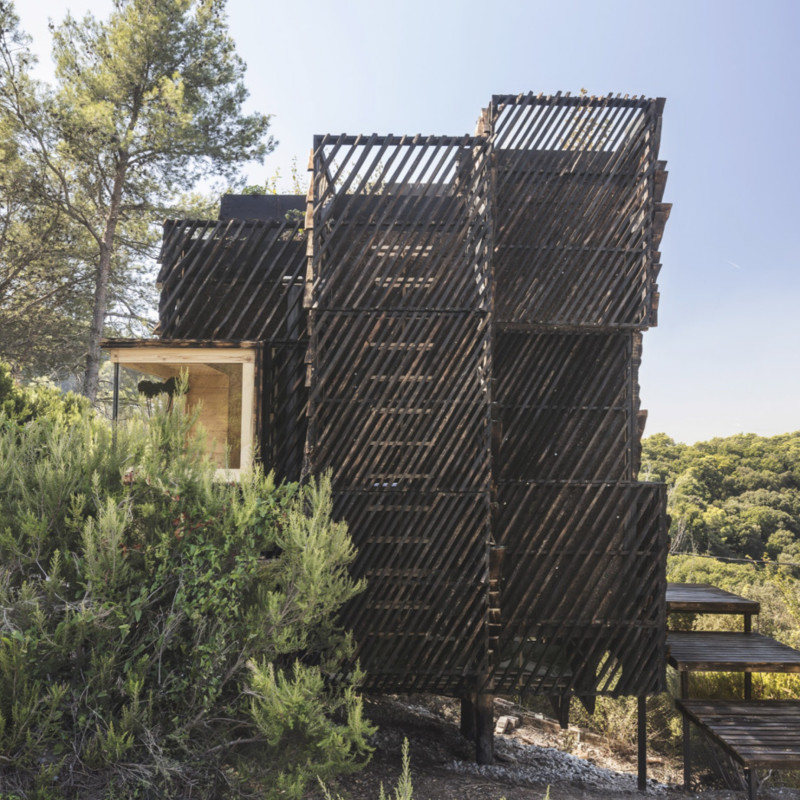5 key facts about this project
The Voxel Quarantine Cabin addresses current health and environmental issues through a clear design strategy. Located in a landscape that supports its purpose, it functions as an independent living space meant for one person needing to isolate for 14 days. The design focuses on sustainability, efficiency, and the smart use of resources, reflecting an understanding of modern ecological architecture.
SUSTAINABILITY AND ENERGY EFFICIENCY
The cabin is built using cross-laminated timber (CLT), which provides strength while promoting environmental awareness. A parametric rainscreen offers protection and improves energy efficiency by carefully managing how the building interacts with the environment. Solar panels with battery storage supply energy for lighting and electronic devices, allowing the cabin to operate independently and minimizing dependence on outside energy sources.
WATER MANAGEMENT SYSTEMS
The inclusion of a rooftop garden enhances the local ecosystem and promotes biodiversity in the area. The cabin features systems to collect rainwater and recycle greywater, thus reducing reliance on external water supplies. Additionally, a biogas infrastructure for treating blackwater produces usable fuel and fertilizer, creating a closed-loop system that aligns with principles of sustainable living.
MODULAR CONSTRUCTION AND LOCAL MATERIALS
Efficiency is key in the construction of the cabin, which uses pre-fabrication techniques. All CLT and facade components are made in a workshop and then quickly assembled on-site. This approach not only improves safety and precision but also minimizes the impact on the environment. The use of Aleppo Pine, sourced through careful harvesting practices that support local forest restoration, further emphasizes a commitment to sustainable practices in sourcing materials.
NATURAL INTEGRATION
The design connects the cabin with its surroundings through varied visual elements. Off-cuts from timber fabrication are repurposed as charred slats on the exterior, which helps the building blend into the landscape while adding to its character. This detail highlights an innovative approach and underlines the relationship between the constructed environment and nature, emphasizing the project's focus on sustainable design practices.



















































